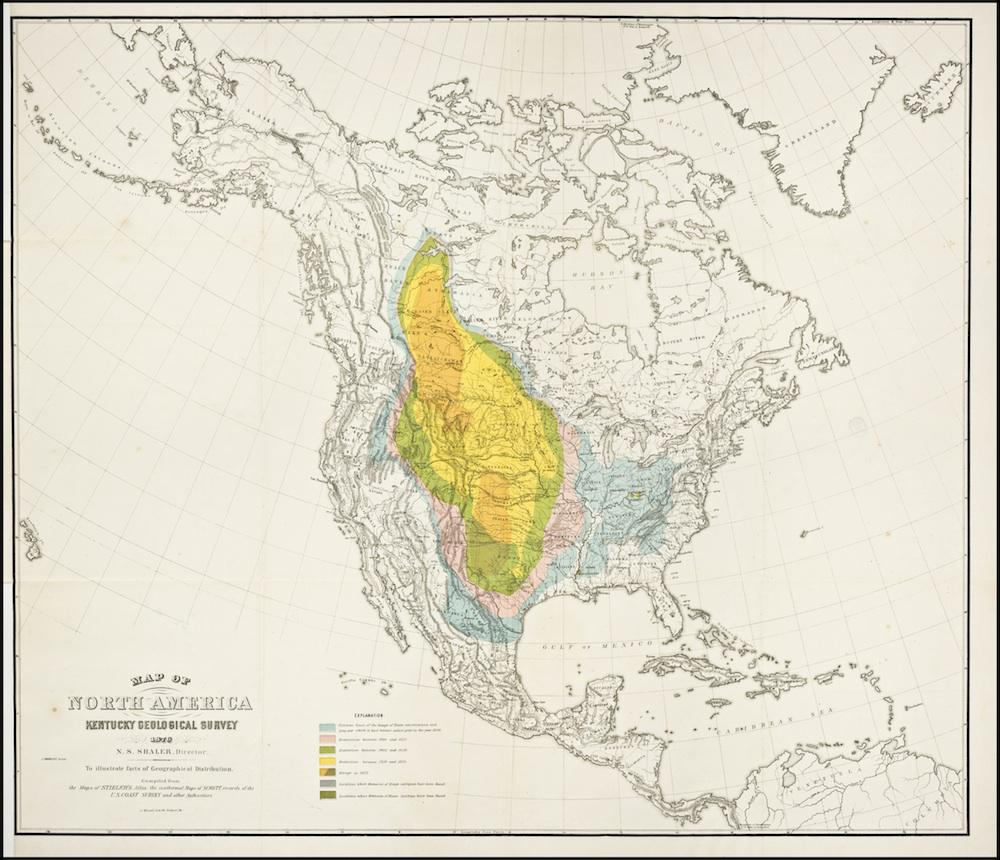The Vault is Slate’s history blog. Like us on Facebook, follow us on Twitter @slatevault, and find us on Tumblr. Find out more about what this space is all about here.
The Fish and Wildlife Service estimates that North American bison, which early settlers called “buffalo” because of their resemblance to Asian and African buffaloes, comprised a herd of 30 million to 60 million individuals in the 16th century. By 1876, when this map was published in a book by Harvard zoologist Joel Asaph Allen, the herds were gone from the southern plains. By 1884 there were only about 300 wild bison left in the United States.
In his book about bison extirpation, historian Andrew C. Isenberg points out that the reasons for the mass 19th-century slaughter were many. There was drought, affecting the grasslands where bison grazed; pressures from domesticated livestock exacerbated erosion; and Native American tribes forced from traditional hunting grounds and lifeways killed bison for food and for profit.
But most of all, white American settlers moving west with the railroads killed millions, both for sport and for hides to sell to markets both domestic and foreign. Federal authorities, Isenberg writes, “supported the hunt because they saw the extermination of the bison as a means to force Indians to submit to the reservation system.”
It might seem strange that the Kentucky Geological Survey, which commissioned Allen’s book, would be interested in the history of the bison, but the area known as Big Bone Lick (now a state park 25 miles southwest of Cincinnati) contained one of the best fossil records of ancient bison in the United States. As this map shows, bison once roamed the whole of the state.
Thanks to Susan Schulten, who featured this map on the website that accompanied her book Mapping the Nation: History and Cartography in Nineteenth-Century America. Click on the image to reach a zoomable version.

Newberry Library, via Mapping the Nation.